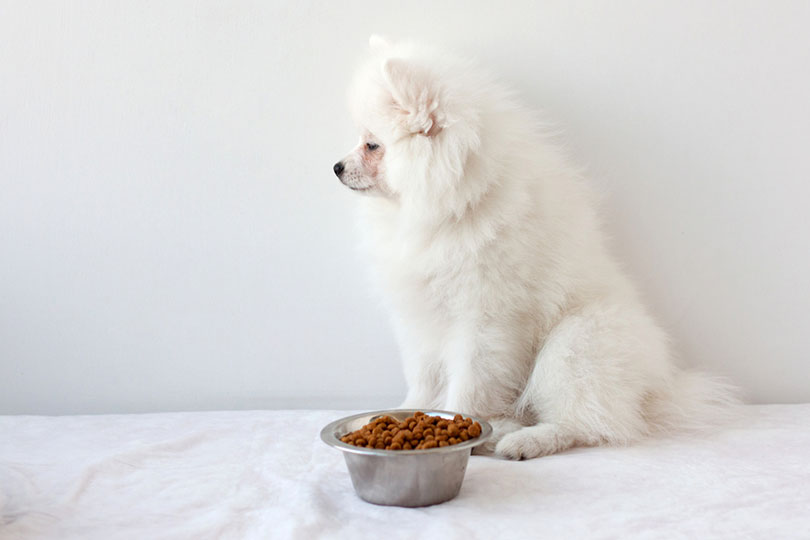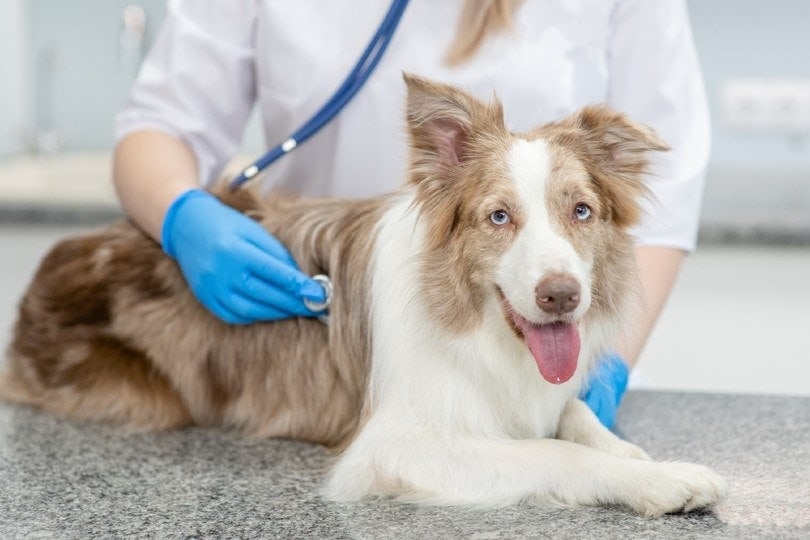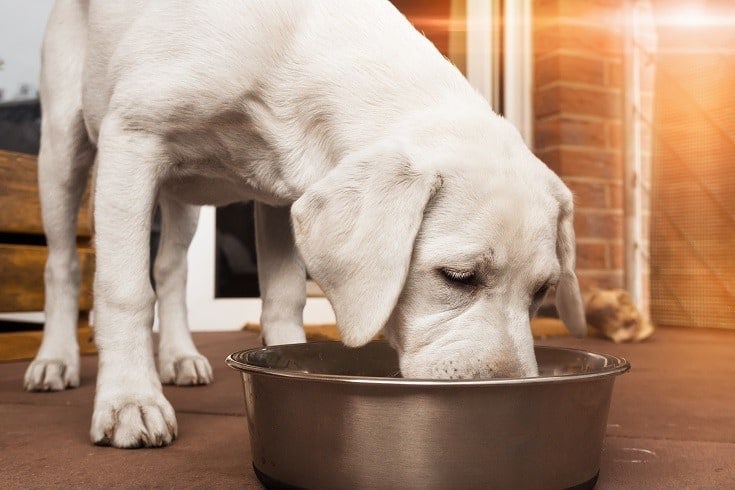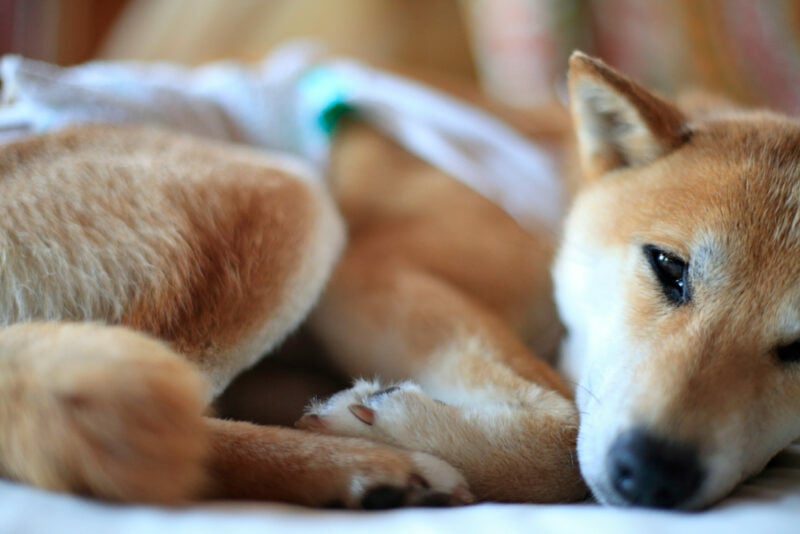5 Feeding Tips for Dogs With Pancreatitis (Vet Answer)
By Dr. Sharon Butzke, DVM (Vet)
Updated on

Dogs with pancreatitis may require a hospital stay initially, but once they have been discharged, their owners play an important role in the rest of their recovery.
In the past, treatment of pancreatitis in dogs often involved extended periods of fasting, with the intention of “resting” the pancreas.1 Current research is showing, however, that nutrition is critical to the process of healing in patients with pancreatitis, as well as with many other medical conditions.2
In this article, we will offer tips for supporting your pup’s appetite once they are recovering at home.
Top 5 Feeding Tips for Dogs with Pancreatitis:
1. Manage Nausea and Pain

Inflammation from the pancreas affects nearby organs (e.g., the stomach), resulting in nausea and pain. A dog who is feeling unwell is unlikely to be interested in food, so it is extremely important to address these symptoms. Your veterinarian will likely provide you with medications to administer at home, as needed.
Particularly in the early stages of recovery, it is often recommended to give your pup the benefit of the doubt and assume they may be nauseous and sore. Anti-nausea and pain medications are typically very safe, and addressing symptoms preemptively is usually more effective than waiting for obvious signs of discomfort.
2. Stick to the Diet Recommended by Your Veterinarian
A low-fat, easily digestible diet is the standard recommendation for dogs with pancreatitis. This can be accomplished with either a commercial (often prescription) or home-prepared diet. It is extremely important that a home-prepared diet intended for long-term feeding has been formulated by a veterinary nutritionist, to ensure it is complete and balanced.
Your veterinarian will recommend a feeding plan for your specific dog after considering a variety of factors, including:
- Body condition (i.e., whether weight loss, gain, or maintenance is needed)
- Age and lifestyle (e.g., physical activity level)
- Any known dietary allergies or intolerances
- Other diseases your pet may have (e.g., diabetes mellitus)
- Optimize the benefits of your dog’s diet with our calorie calculator here.
3. Avoid Feeding High-Fat Foods

Pancreatitis patients may need a little extra enticement to eat, especially in the early stages of recovery. It may be tempting to offer your dog people food or treats in order to tempt their appetite, but ingestion of high-fat foods has been linked to pancreatitis.
Remember to consider how you are administering medications. Peanut butter, hot dogs, and cheese are popular food choices for hiding pills. However, they are all high in fat and not recommended for dogs with pancreatitis (even in small amounts). Ask your veterinarian if you can try using some lean, boiled chicken breast, or a meatball of low-fat canned food instead.
4. Make Meals More Appealing
Some dogs may resist their new diet at first, so you might need to get a little creative with the presentation. The following suggestions should be safe for most dogs with pancreatitis, but make sure to check with your veterinarian first.
- Offer smaller portions more frequently, rather than one or two large meals per day
- Some dogs enjoy being fed by hand and getting a little extra attention while they eat; others may prefer to be left alone
- Feed your dog separately from any other pets in the house, so that they can take their time eating and not worry about competition
- Add some extra moisture to their food (e.g., water, low-fat canned food, small amounts of low-fat and low-sodium broth)
- Warm their food to enhance palatability
5. Help Lower Your Dog’s Risk of Pancreatitis Recurrence

While a direct cause of pancreatitis is not identified in many cases, certain factors have been associated with increased risk.
In addition to the tips we have already discussed, here are some additional considerations that may help reduce the risk of your dog’s pancreatitis recurring:
- Avoid abrupt and frequent diet changes
- Store food properly to avoid rancidity
- Prevent accidental access to garbage, and make sure they don’t eat things they shouldn’t when out in the backyard or on walks
- Help them maintain an ideal body weight
Conclusion
If your dog has been diagnosed with pancreatitis, nutrition is an important part of their recovery. It may take a little time for their appetite to return to normal but, as long as there are steady signs of improvement, keep persevering! Your veterinary team is a great support and can offer additional tips and tricks for your particular dog.
Remember to schedule follow-up appointments, as recommended by your veterinarian, so they can monitor your pup’s progress and adjust their feeding plan if needed.
Seek veterinary attention right away if your dog suddenly refuses to eat, seems nauseous or painful, or starts vomiting and is unable to keep food and water down.
Featured Image Credit: Varvara Serebrova, Shutterstock












